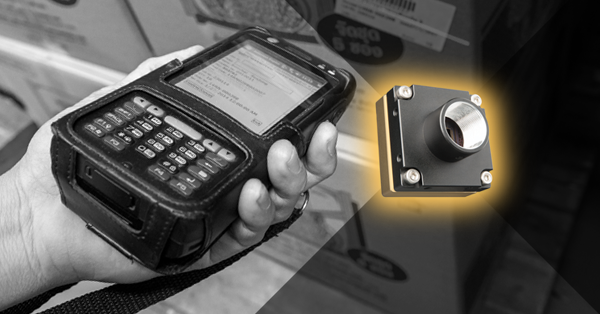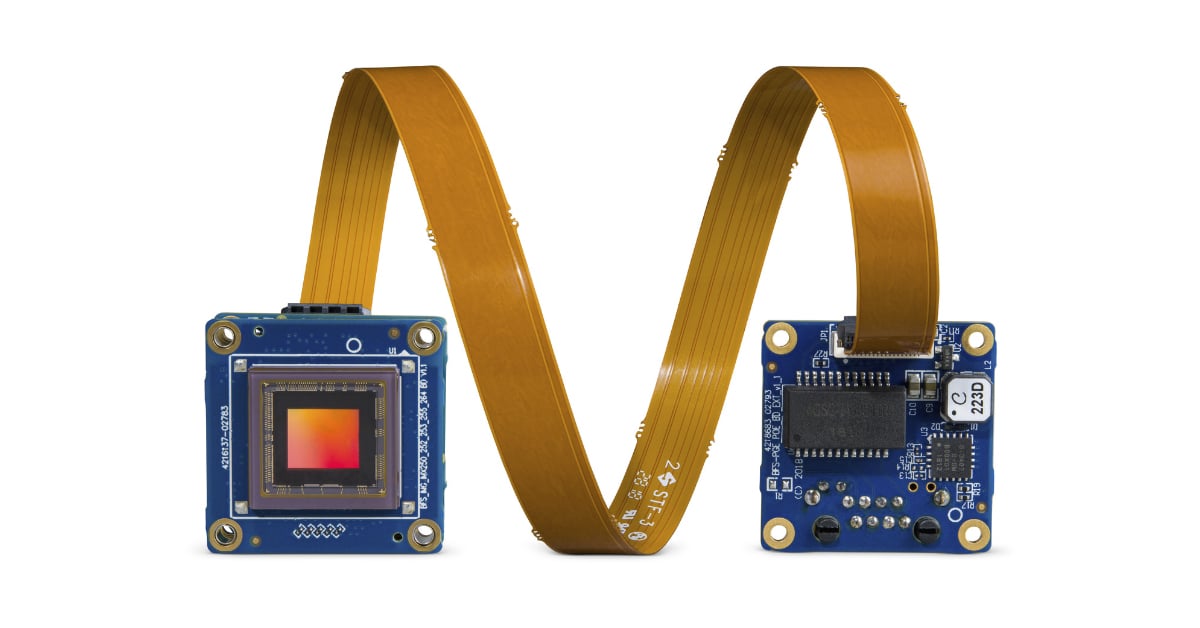Vision-based blood test system gives accurate results in 15 minutes
Anyone who's spent time in a hospital knows one of the first steps in the diagnosis process is to take any numbers of tests. The samples are sent off to the lab and it can take several hours or days before the results are delivered to the doctor and ultimately, the patient. Additionally, there are times when doctors need to weigh the cost of tests when considering their options. There is an obvious need to lower healthcare costs, provide access to more accurate clinical decisions, and faster patient treatment.
BIOSURFIT'S spinit® POINT OF CARE TESTING (POCT) UNIT
Motivated by this challenge, Biosurfit has developed the spinit, a proprietary technological platform for Point of Care Testing (POCT). Point-of-care testing (POCT) is medical testing at or near the site of patient care. The driving notion behind POCT is to bring the test conveniently and immediately to the patient. This increases the likelihood that the patient, doctor, and care team will receive the results quicker, which allows for immediate clinical management decisions to be made.
Using a combination of FLIR cameras, proprietary software, and easy to use DVD-styled test cartridges, the spinit takes one small drop of blood and gives precise results within 15 minutes. Compared to similar devices in the market, the spinit is cost-efficient, fast, accurate, reliable, and uniquely capable of multi-parameter testing. The same spinit unit will be able to conduct different tests by using different cartridges.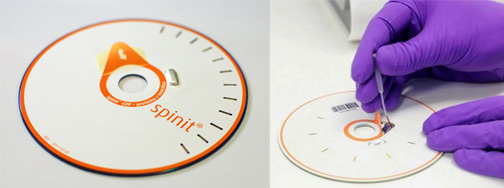
spinit® TESTING PROCESS
A technician places a single drop of blood onto the test panel cartridge and all the blood sample preparation is done automatically. The sample flows through a series of microfluidic structures, where different operations are made including separation of blood components and mixing with other solutions. After preparation, the sample is directed to a number of detection zones on the cartridge.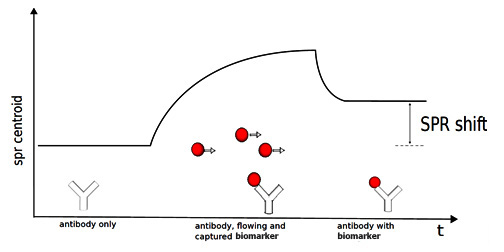
Each detection zone includes a biological recognition layer (BRL) developed using antibody fragments attached on a gold surface. By using different antibody fragments and immobilization strategies, the gold layer will act as a selective trap for a specific blood biomarker. When the patient's blood passes through the BRL, the targeted biomarker binds to the antibody fragments. It is the concentration of trapped biomarkers that the spinit is testing.
OPTICAL MODULE
The spinit uses Surface Plasmon Resonance (SPR), a well-established spectrometry technique, to optimally measure the concentration of biomarkers. This is done by measuring the refractive index of light reflecting off the gold's surface after exposure to the patient's blood sample: the higher the concentration; the lower the index.
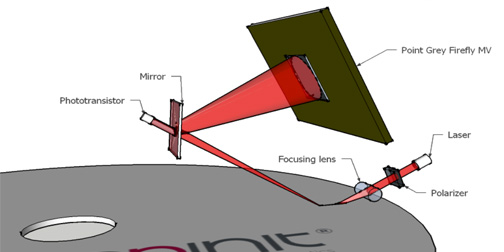
The optical module uses a FLIR Firefly MV FireWire monochrome camera acquiring images at almost 160 FPS with an ROI of 50 x 800 pixels. The light source is a laser that goes through a polarizer and a focusing lens. A 785nm laser utilizing near IR wavelength and is always on while performing the measurement. The cartridge is spinning, much like a regular CD, and the camera is triggered when the phototransistor behind the semi-opaque mirror detects a reflection coming from the detection zone. The camera is used to acquire 3,000 images of each detection zone over a 10-minute period.
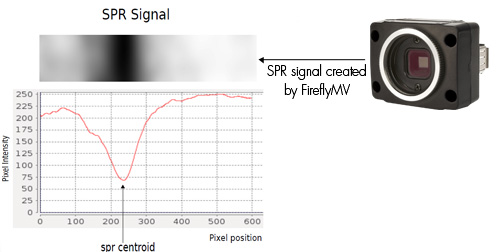
The image shown above is the SPR signal acquired by the Firefly MV. As the biomarkers are trapped, the dark band starts moving to the right. From the SPR image, the spinit calculates a vector that is the same length of the image, but with the columns averaged, resulting in the curve shown in the table. This curve is the averaged pixel intensity along the detection zone.
THE RIGHT CAMERA
The Firefly MV has a number of advantages for the spinit. First, the compact size of the camera is important as the spinit's small "desktop" footprint measures just 215 x 236 x 306 mm and weighs roughly 4kg. The affordability of the Firefly MV is also a key contributor to the overall low-cost of the system which affects both customer adoption as well as spinit's position in the highly competitive POCT market. The Biosurfit team had tested a number of cameras and vendors and came to rely on FLIR's world class customer support team for their reliability and responsiveness. Additionally, FLIR's FlyCapture software supports Linux and allows for excellent control of acquisition parameters such as software triggering at high frame rates and variable ROI.
WHAT'S NEXT?
The spinit will be released later in 2012 and the first cartridge will measure C-reactive Protein (CRP). CRP is an acute phase protein actively circulating in the body during an inflammatory response. CRP is a standard test parameter, important in treating bacterial infections, significantly decreasing the chances of inadequately prescribing antibiotics and more effectively treating other infections and inflammatory conditions. Future tests to be added include total blood count, a diabetes panel and a cardiac panel.
